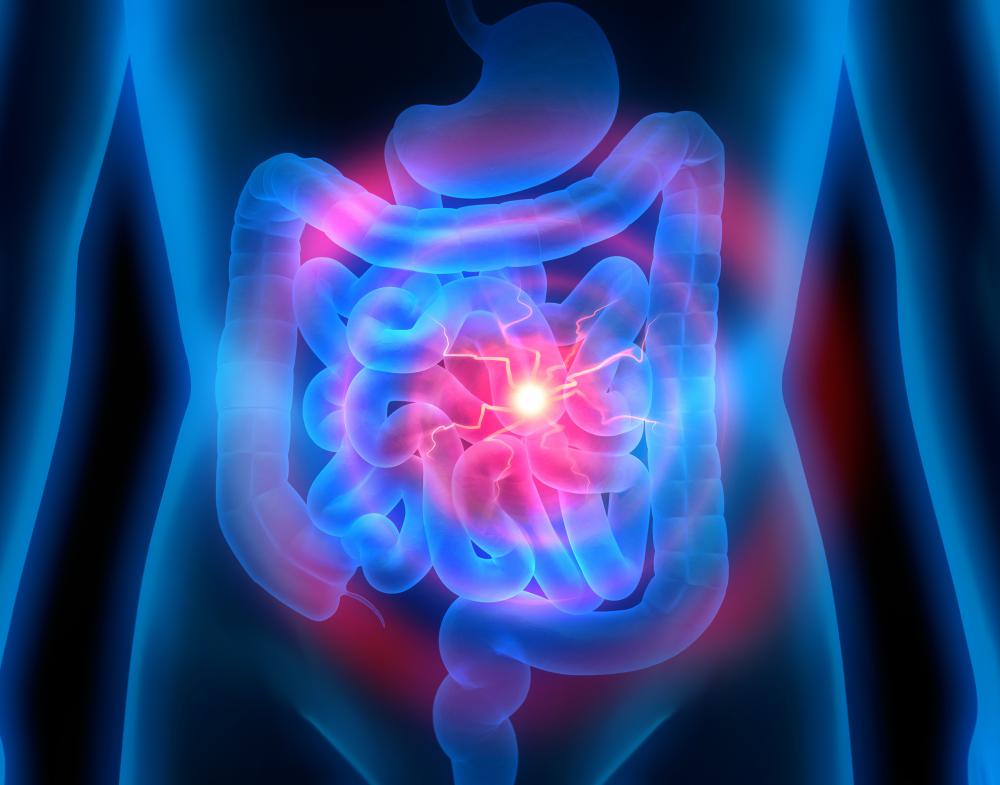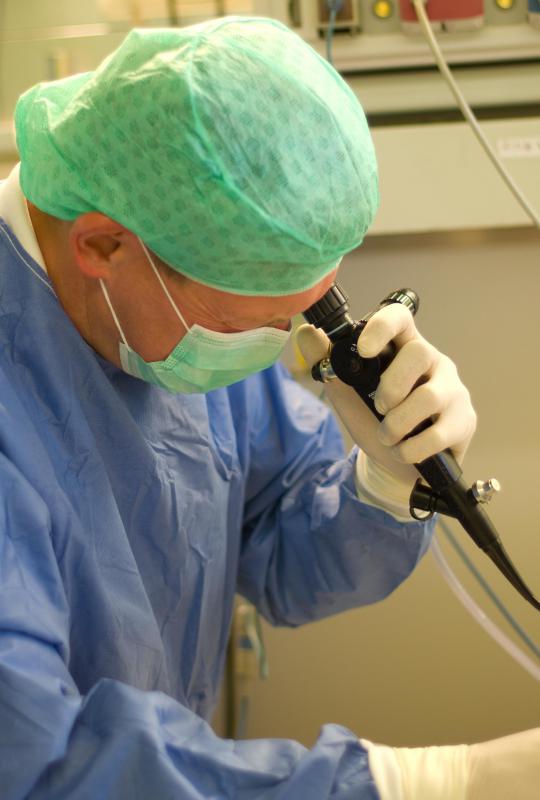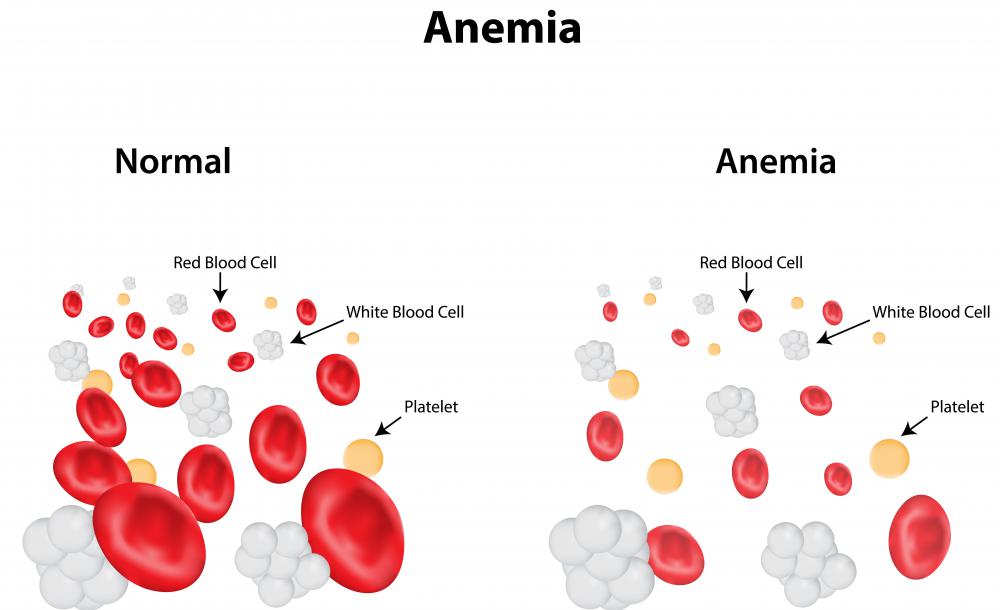At TheHealthBoard, we're committed to delivering accurate, trustworthy information. Our expert-authored content is rigorously fact-checked and sourced from credible authorities. Discover how we uphold the highest standards in providing you with reliable knowledge.
What is an Angiodysplasia?
Angiodysplasia is a medical condition in which the intestine is malformed or twisted, causing blood vessels to enlarge and become fragile and eventually causing tears or lesions in the intestinal wall. It is also sometimes known as a vascular ectasia of the colon, a colonic arteriovenous malformation, or a colonic angioma. Sometimes it’s caused by other intestinal disorders, but more often it’s simply a factor of aging; the intestinal walls weaken with age and repeated use, and the majority of people with the condition are over the age of 50. In terms of specifics, the erosion often occurs in the cecum or ascending colon, but can occur in the small intestine as well. Multiple lesions usually happen at once, but they’re really small and can be difficult to diagnose. Most of the time the condition is painless, too, so people don’t necessarily realize they’re afflicted until body scans show or other symptoms start emerging. Some medications and in-office procedures can help reverse the condition, but in extensive or advanced cases surgery is often recommended.
Main Causes

The disease is thought to be related to degeneration of the blood vessels due to age, as it most typically occurs in adults over the age of 50. Another likely cause is obstruction of the veins in the colon due to tension on the intestinal wall as it becomes larger. It rarely is associated with other intestinal disorders, such as diverticulosis or colon cancer. There is scant evidence of a genetic link, and occurrences in children and young adults are very rare.
Common Symptoms

Many people who suffer from this condition aren’t aware that they have it since pain, the main indicator of ailments, almost never accompanies the problem. Gastrointestinal bleeding is a very common symptom, but when the holes in the intestine are very small, this can be difficult to detect and almost impossible to feel. Dark, tarry stools are one common result, and anemia — low iron count in the blood — can also happen as a consequence. Anemia can be a serious condition, but there are a number of possible causes.
How It’s Diagnosed

When it comes to statistics, this condition is actually quite rare. Studies typically suggest that angiodysplasia occurs in less than one percent of the population, which means that it isn’t usually something that healthcare providers suspect at first, and isn’t usually something that they test for, either. In most instances the condition is found more or less accidentally during a routine colonoscopy screening. These screenings are often recommended for mature adults to catch things like colon cancer in its early, treatable stages.

Angiodysplasia occurs equally in men and women. No racial or ethnic group is known to have a higher incidence of the condition, though patients with scleroderma, which is a rheumatic autoimmune disease that impacts primarily connective tissues, do tend to see slightly higher incidences; sufferers of other autoimmune diseases usually have a higher risk of developing this condition, too.
Treatment Options

When a healthcare provider suspects angiodysplasia, he or she typically orders an endoscopic procedure to get a better view of what is happening in the colon. There are several types of this sort of procedure, but the most common are an esophagogastroduodenoscopy (EGD) or colonoscopy. During either, the physician may be able to treat the lesions through cauterization or by performing an argon plasma coagulation laser treatment. Both of these are methods of actually fixing the lesions and sealing up the holes that are causing trouble.

Even these methods aren’t always required, though. It’s estimated that for approximately 90 percent of patients, the condition resolves on its own without intervention. In many cases it will recur, though, particularly if a person suffers from chronic distension of the colon blood vessels. In these cases, sealing the lesions is often the best course.
Cauterization and coagulation usually work best if there are only a few identifiable holes. When the lesions are very numerous, sealing each up can be onerous and sometimes dangerous; the more there are the more likely a surgeon is to miss a few, too, which can make the whole undertaking ineffective. As such, if the condition is advanced, surgical resectioning of the intestine may be required. The process used most often is called a right hemicolectomy, and actually involves removing part of the intestine.
AS FEATURED ON:
AS FEATURED ON:
















Discuss this Article
Post your comments